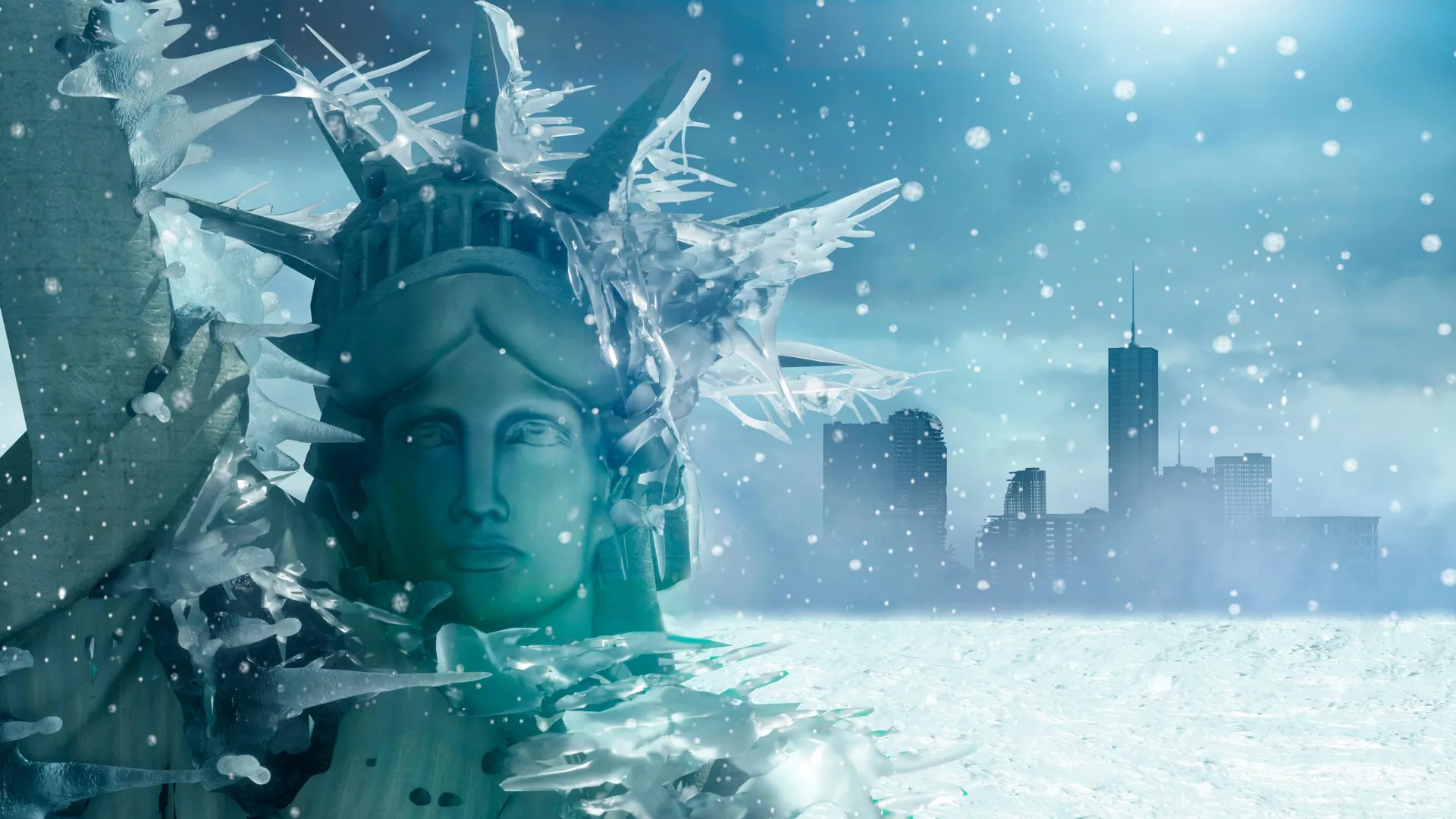Why America’s still freezing — even as the world heats up
- Date:
- July 12, 2025
- Source:
- The Hebrew University of Jerusalem
- Summary:
- Even in a warming climate, brutal cold snaps still hammer parts of the U.S., and a new study uncovers why. High above the Arctic, two distinct polar vortex patterns — both distorted and displaced — play a major role in steering icy air toward different regions. One sends it plunging into the Northwest, while the other aims it at the Central and Eastern U.S. Since 2015, the westward version has been more common, bringing intensified cold to the Northwest in defiance of global warming trends. This stratospheric detective work offers fresh insight into extreme winter weather — and could supercharge long-range forecasts.
- Share:

Despite a warming climate, bone-chilling winter cold can grip parts of the U.S. -- and this study explains why. Researchers found that two specific patterns in the polar vortex, a swirling mass of cold air high in the stratosphere, steer extreme cold to different regions of the country. One pattern drives Arctic air into the Northwest U.S., the other into the Central and Eastern areas. Since 2015, the Northwest has experienced more of these cold outbreaks, thanks to a shift in stratospheric behavior tied to broader climate cycles. In short: what happens high above the Arctic can shape the winter on your doorstep.
As winters in the United States continue to warm on average, extreme cold snaps still manage to grip large swaths of the country with surprising ferocity. A new study offers a powerful clue: the answer may lie more than 10 miles above our heads -- in the shifting patterns of the stratosphere.
The international team includes Prof. Chaim Garfinkel (Hebrew University), Dr. Laurie Agel and Prof. Mathew Barlow (University of Massachusetts), Prof. Judah Cohen (MIT and Atmospheric and Environmental Research AER), Karl Pfeiffer (Atmospheric and Environmental Research Hampton), Prof. Jennifer Francis (Woodwell Climate Research Center), Prof. Marlene Kretchmer (University of Leipzig). The study published in Science Advances, reveals how two specific patterns in the stratospheric polar vortex -- a high-altitude ribbon of cold air circling the Arctic -- can trigger bone-chilling weather events across different parts of the U.S.
"The public often hears about the 'polar vortex' when winter turns severe, but we wanted to dig deeper and understand how variations within this vortex affect where and when extreme cold hits," said the researchers.
Two Vortex Patterns, Two U.S. Outcomes
The team identified two distinct variations of the polar vortex, both linked to what scientists call a "stretched" vortex -- a distorted and displaced circulation pattern that leads to unusual weather on the ground.
- One variation pushes the vortex toward western Canada, setting the stage for intense cold in the Northwestern U.S.
- The other nudges the vortex toward the North Atlantic, unleashing frigid air across the Central and Eastern U.S.
Both versions are associated with changes in how atmospheric waves bounce around the globe -- essentially altering the jet stream and dragging Arctic air far southward.
A Westward Shift in the Cold
Perhaps most striking is the discovery that since 2015, much of the northwestern U.S. has been getting colder in winter, contrary to broader warming trends. The researchers tie this shift to the increased frequency of the westward-focused vortex pattern, which also coincides with stronger negative phases of the El Niño/Southern Oscillation (ENSO) -- a key global climate driver.
"Climate change doesn't just mean warming everywhere all the time. It also means more complex and sometimes counterintuitive shifts in where extreme weather shows up," explained the researchers.
Why It Matters
These findings help explain recent cold waves in places like Montana, the Plains and even Texas as in February 2021 (which was very costly in terms of deaths and insured losses), while other regions may experience milder winters. Understanding the stratosphere's fingerprints on weather patterns could improve long-range forecasting, allowing cities, power grids, and agriculture to better prepare for winter extremes -- even as the climate warms overall.
The work was funded by a US NSF-BSF grant by Chaim Garfinkel of HUJI and Judah Cohen of AER&MIT.
Story Source:
Materials provided by The Hebrew University of Jerusalem. Note: Content may be edited for style and length.
Journal Reference:
- Laurie Agel, Judah Cohen, Mathew Barlow, Karl Pfeiffer, Jennifer Francis, Chaim I. Garfinkel, Marlene Kretchmer. Cold-air outbreaks in the continental US: Connections with stratospheric variations. Science Advances, 2025; 11 (28) DOI: 10.1126/sciadv.adq9557
Cite This Page: